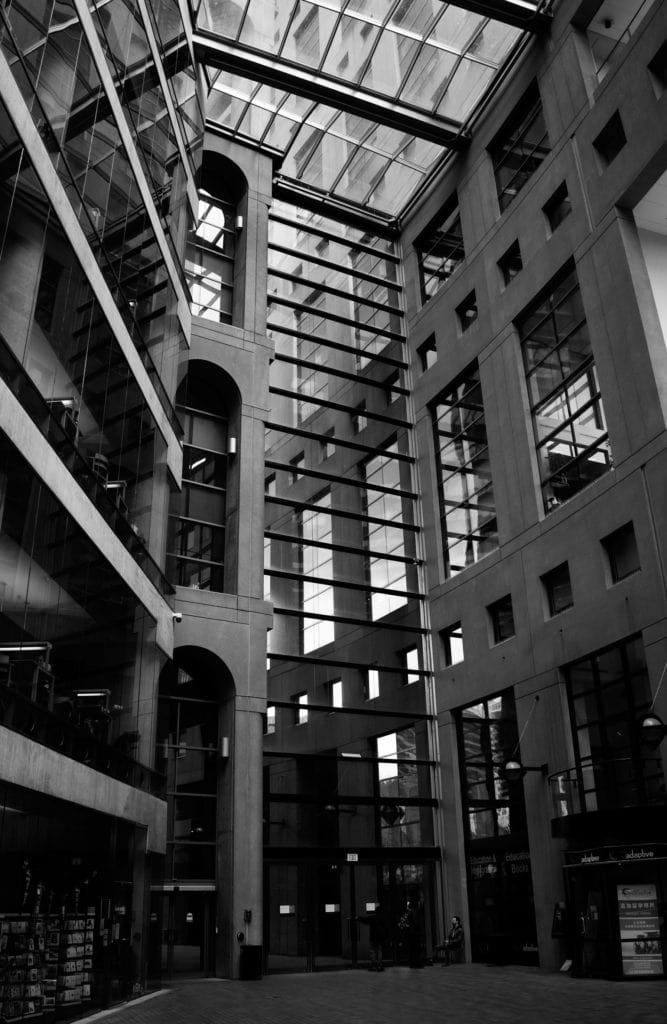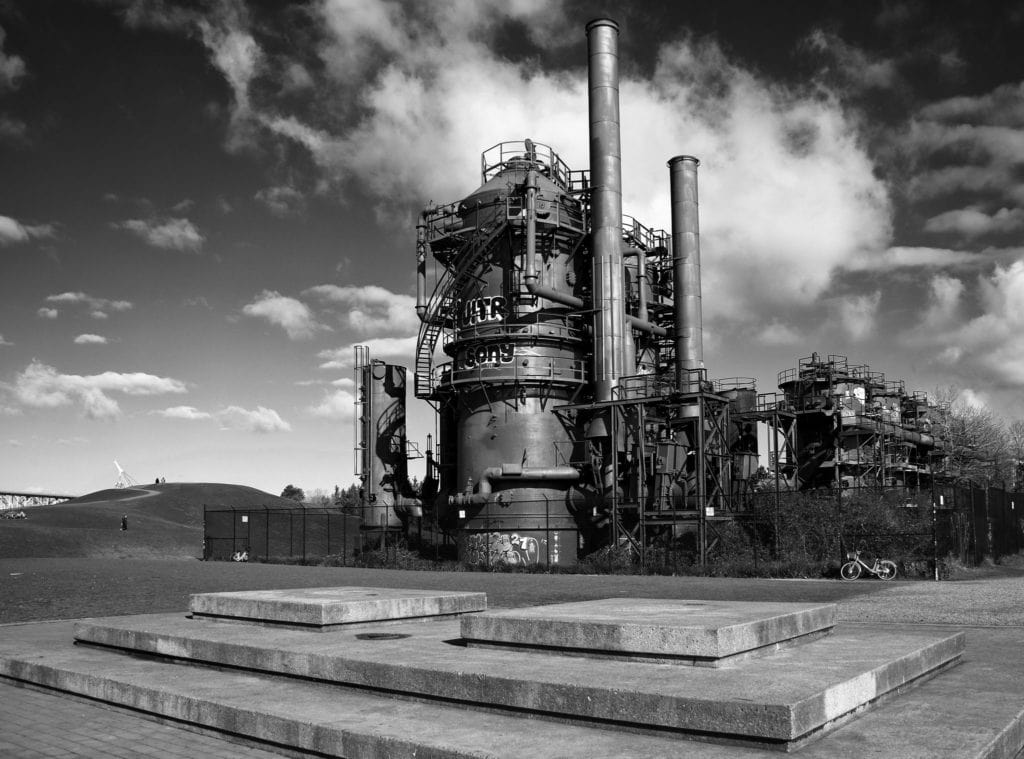 At the end of April 2018, I embarked on a week long roadtrip from Vancouver to Tijuana with two old friends. Our planning was limited to some banter on WhatsApp and covered just the start point, the end point, and the hotels we would stay in. All other details could be determined en route. We excluded Alaska from the scope of the trip – albeit with some regret, as it added another 40 hours of driving. The hotels, which were my responsibility, were rather unequally distributed, but that was where the way points fell on this trip: Vancouver, Seattle and Portland are all quite close together.
At the end of April 2018, I embarked on a week long roadtrip from Vancouver to Tijuana with two old friends. Our planning was limited to some banter on WhatsApp and covered just the start point, the end point, and the hotels we would stay in. All other details could be determined en route. We excluded Alaska from the scope of the trip – albeit with some regret, as it added another 40 hours of driving. The hotels, which were my responsibility, were rather unequally distributed, but that was where the way points fell on this trip: Vancouver, Seattle and Portland are all quite close together.
Misplaced Confidence
We were confident we could easily do the trip in a week – after all, we had covered 2,332 miles in 10 days on a Route 66 trip that took in Monument Valley (something most experienced travellers will tell you is inadvisable) and this was somewhat shorter. As we found out later, there is a world of difference between driving on the arrow straight roads of the South West and the winding Pacific Coast Highway. We had also not factored in getting through the vast, traffic logged urban sprawl of Los Angeles.
We had established a high mileage rhythm on the previous roadtrip – we rolled in a 5,600 lb. beast of a vehicle, shared the driving and were untroubled by long periods of time on the road. For us, that is what defines a roadtrip and gave us our misplaced confidence that the trip would be a breeze.
We saw so much in a week that a single post would never do our West Coast trip justice. Instead I will break it up into sections and give selected highlights their own posts, such as Seattle’s excellent Gas Works Park. As this post describes the start of the journey, our itinerary is below. The mileages and time estimates come from the app Roadtrippers – which is really quite useful. For those planning a trip like this, bear in mind that these are most direct routes, not necessarily the most scenic; our actual mileage, as you can see below, was rather higher as a result.
The Itinerary (with Link to Posts)
- Vancouver, British Columbia
- Seattle, Washington (141 miles, 2 hours 28 minutes)
- Portland, Oregon (173 miles, 2 hours 47 minutes)
- Gold Beach, Oregon (301 miles, 5 hours 31 minutes)
- San Francisco, California (408 miles, 7 hours 15 minutes)
- Pismo Beach, California (246 miles, 3 hours 55 minutes)
- San Diego, California (249 miles, 4 hours 55 minutes)
- Tijuana, Baja California (20 miles, 27 minutes)
Estimated roadtrip Total: 1,589 miles, 27 hours 20 minutes
Actual roadtrip Total: 1,823 miles, approximately 36 hours
Vancouver
My friend Nick and I flew from London Heathrow and were met by Ted, who now lives in Palo Alto, in a wine bar in Vancouver airport. He was clutching a glass of red wine and a welcome sign that had us in stitches. We headed to our hotel – the Fairmont, which turned out not to be the one Ted had recommended. It turned out that there are two Fairmont Hotels in Vancouver. Our very poor planning was already starting to show.
Having checked into the wrong Fairmont we took an enjoyable evening stroll in Gas Town, taking in the famous Steam Clock. We finished the evening with dinner at the excellent Pourhouse and a night cap in the hotel bar.
In the morning we were up early and took a bracing walk from our hotel along the seawall to Stanley Park, stopping to admire Douglas Coupland’s superb Digital Orca and the many seaplanes in the harbour on the way. From there we took a taxi to the iconic Capilano suspension bridge and enjoyed a walk amongst the old growth Douglas fir trees. We took a taxi back into the city and took in Vancouver’s striking Central Library (shown here), the design of which is based loosely on the Colosseum. After that we visited Earls in Yale Town for a late lunch and then it was time to hit the road. We couldn’t hire a car from Vancouver to San Diego (we didn’t plan to drive in Mexico), so we had arranged to pick up the hire car in Seattle. As the train times didn’t line up with our chosen departure time we booked a car service to get us there.
An Old White Stretch
Ted took care of this and a slightly seedy looking white stretch limo duly appeared, with a Russian driver who looked like an unreformed alcoholic. He made it plain that whilst having alcohol in the car was against the rules, he wouldn’t be checking up on us. We loaded the car, including some local beverages, amongst which was a promising sounding beer called 33 Acres of Darkness, and set off. The sound system in the ageing stretch was temperamental but eventually we got our play lists loaded. We crossed the border into the USA, narrowly getting ahead of a coach load of excitable school children. Our driver was severly chastised by US customs for bringing an alien orange with him, and was required to leave it in Canada. Otherwise our border crossing was unremarkable. We took the most direct route and so we didn’t see much in the way in scenery, which later reading revealed to be a mistake, but it was a fun and relaxing leg of the journey.
Seattle
Seattle was cold and overcast when we arrived and it soon started to rain heavily. I am sure Seattle is a great city, but it wasn’t at its best for us on this trip. Nick and I were tired from the flight, the section of bars we took in missed the mark, and whilst we had an excellent dinner at Canon, the waitress made it quite clear that we were incompetent diners who were quite incapable of ordering either food or drink without close supervision. Between bar and restaurant the rain turned to hail. As we passed a bedraggled line of Millennials, queuing to watch comic JP Sears and vainly trying to shelter from hail stones the size of marbles, I was glad we would soon be heading South and into better weather.
At breakfast in the W Hotel we debated where to go in Seattle before we headed for Portland. Naturally we all wanted to see the Space Needle. I had read that the best place to view of it from, as part of the Seattle skyline, was from Kerry Park – so we duly headed there. Mercifully it was dry but somewhat misty. When we arrived I also found the sun to be entirely in the wrong place to get a good shot of the skyline. Nevertheless I set up my tripod and did my best with the light I had. Nick and Ted, meanwhile, started chatting with a drone photographer who was operating next to me, humorously comparing my DSLR, cable release and tripod setup very unfavourably with the agile 4K equipped aerial device.
Determined to get at least one good shot of Seattle, we headed for Gas Works Park, which was a revelation – the link will take you to my blog about it as a one of the photographic highlights of the trip. Though it was still bitterly cold, it was bright and sunny by the time we arrived. We were incredibly impressed by the rusting collection of industrial era technology, partly overgrown and daubed with graffiti, that forms the unlikely centre piece for the park. There were also great views of the city skyline over Lake Union. We spent quite a while at GWP and then went to collect our vehicle.
Getting our Wheels
Unless you are renting an exotic of some description, it is impossible to specify the exact make and model of vehicle you would like. Our hope was for another Chevy Suburban, but aside from knowing that it would be a large SUV, we had no idea what we would get. We were pleased to find Hertz had a Suburban for us, though it looked a little bit of a chav wagon in white compared to our preferred US Government black; Suburbans, albeit in HD form, are used extensively by the FBI. The 2017 Chevy Suburban is 18.5 feet long, can carry nine passengers and will tow a handy 8,300 pounds. Whilst that might sound excessive, when you are in a vehicle for up to 10 hours a day a bit of space makes a lot of difference. With its ladder frame chassis and soft suspension it is no driver’s vehicle, but it has huge presence and the big 5.3L V8 makes for effortless mileage. Content that we we had a proven set of wheels under us, we loaded up and headed for Portland, Oregon, with little idea what we would find when we got there.
 On the north shore of
On the north shore of